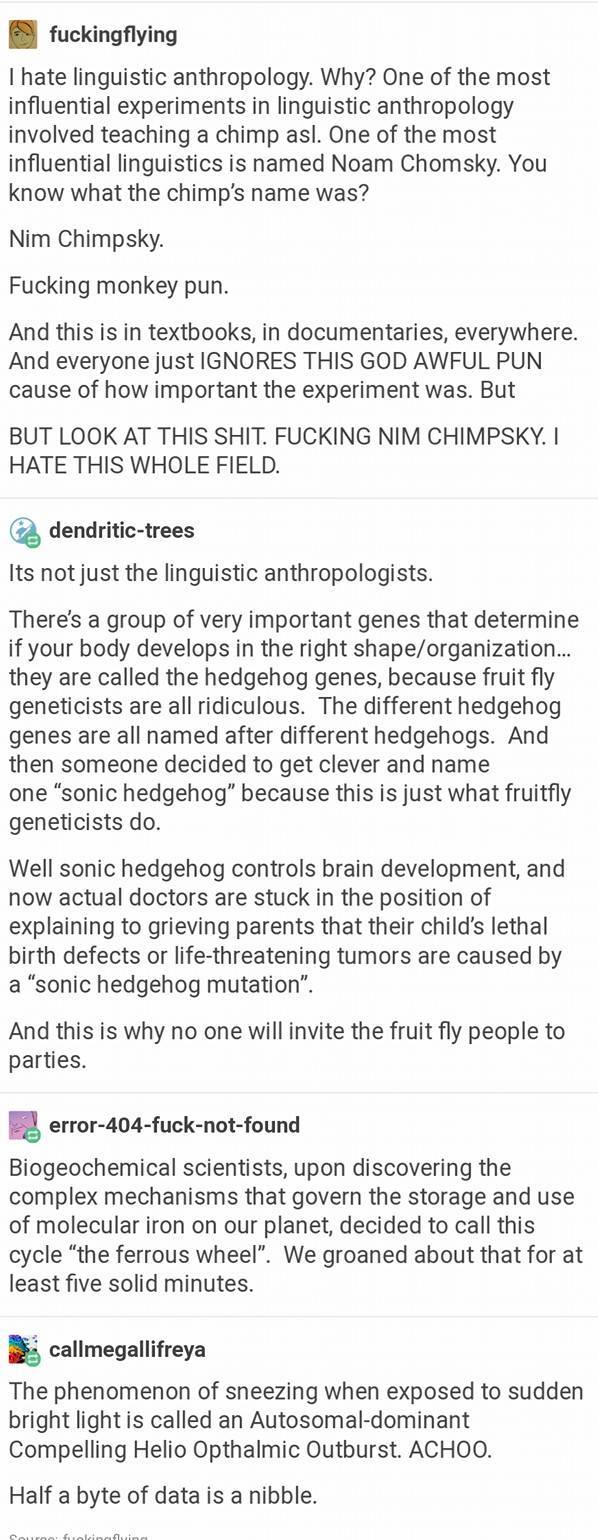this post was submitted on 13 Mar 2024
895 points (98.1% liked)
Science Memes
11086 readers
1698 users here now
Welcome to c/science_memes @ Mander.xyz!
A place for majestic STEMLORD peacocking, as well as memes about the realities of working in a lab.

Rules
- Don't throw mud. Behave like an intellectual and remember the human.
- Keep it rooted (on topic).
- No spam.
- Infographics welcome, get schooled.
This is a science community. We use the Dawkins definition of meme.
Research Committee
Other Mander Communities
Science and Research
Biology and Life Sciences
- [email protected]
- [email protected]
- [email protected]
- [email protected]
- [email protected]
- [email protected]
- [email protected]
- [email protected]
- [email protected]
- [email protected]
- [email protected]
- [email protected]
- [email protected]
- [email protected]
- [email protected]
- [email protected]
- [email protected]
- [email protected]
- [email protected]
- [email protected]
- [email protected]
- [email protected]
- [email protected]
- [email protected]
- !reptiles and [email protected]
Physical Sciences
- [email protected]
- [email protected]
- [email protected]
- [email protected]
- [email protected]
- [email protected]
- [email protected]
- [email protected]
- [email protected]
Humanities and Social Sciences
Practical and Applied Sciences
- !exercise-and [email protected]
- [email protected]
- !self [email protected]
- [email protected]
- [email protected]
- [email protected]
Memes
Miscellaneous
founded 2 years ago
MODERATORS
you are viewing a single comment's thread
view the rest of the comments
view the rest of the comments

C++ is just the next iteration of C. C# is just another layer of iteration on top of C++. Flags are simple indicators for programs, usually set by a controlling human/system, semaphores are flags that communicate between processes.
This is somewhat clever when you know that the ‘++’ operator is the post-increment operator in C.
…except there is no ‘#’ operator in C or C++, so any interesting self-referential pattern breaks down here. The ‘#’ comes from musical notation, where a ‘#’ (sharp) note is played a semitone higher — and was chosen more for marketing purposes rather than scientists having an inside joke.
You could have also mentioned ‘D’, which is another “next iteration of C” independent of C++.
The # looks like two "++" stacked on top of one another
Exactly